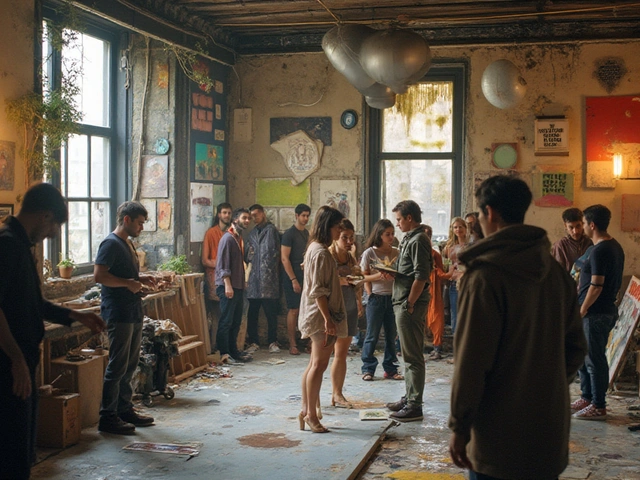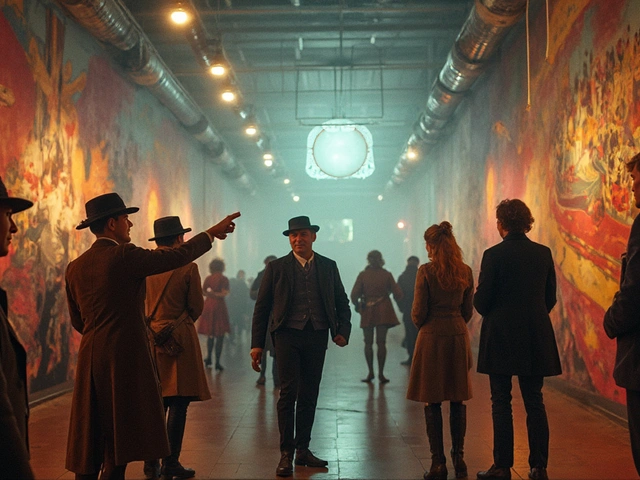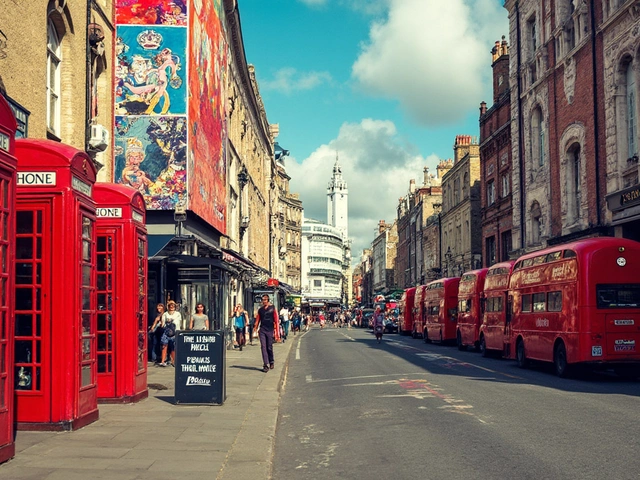Delving into the Delicate Intricacies of Rococo Art
Once upon a time in the fenestrated world of art, emerged the Rococo, a style as dramatic and equally grandeur as some of the performances my darling Damian used to enact in his college theatre club. It was so captivating that it stretched across various other facets such as architecture, literature, music, and of course, art. This light-hearted and decorative style came into existence in the early 18th Century in Paris and quickly traversed across Europe, gracing the world with its flamboyant charm.
Seductively sinuous and overflowing with pastel tones, images of the Rococo era convey an ebullient, almost whimsical aesthetic. The word 'Rococo' itself is said to be a blend of the French words roche (rock) and coquille (shell), reflecting the natural motifs that became integral to this art form. Isn't it fantastic how the essence of an entire art movement can be encapsulated within its name?
Casually strolling through the corridors of Rococo's history feels akin to my weekend cultural jaunts with Maeve. Just as she explores the recreational parks of Sydney, picking up leaves as keepsakes, I find myself picking up fascinating details about Rococo that resonate its elegance and supremacy in shaping ornamental art. From scrolling curves to intricate floral designs, Rococo is an epitome of poetic decadence in the world of art.
Embracing the Effervescence of Rococo Architecture
For our first dive into the Rococo pool, let's take a look at Rococo Architecture, a realm that radiates opulence as splendidly as Damian’s homemade Chicken Marsala. It was Rococo architecture that embraced asymmetrical designs and scroll motifs, all artfully blended with softer hues. Architect designers of the Rococo era - if alive today, would have scoffed in disdain at my handywoman attempts at asymmetry when I once tried to repair a crooked shelf in our living room.
The quintessence of Rococo Architecture lies in its love for details. Parisian salons were the heart of Rococo architecture – adorned with theatrical wall paintings, ornate sculptures, and elaborate woodwork, reminiscent of the painstakingly detailed birthday cakes Damian and I endeavour to create for Maeve's birthdays. The trend of using pastel colour palettes, combined with ostentatiously detailed design, magically weaves a tale of grandeur that leaves anyone in awe of their timeless beauty.
Savouring the Sublime Beauty of Rococo Paintings
Rococo Painting, on the other hand, is like Sydney's sunny beaches in the summertime - an explosion of colours, happiness, and merrymaking. Unabashedly romantic, the paintings depicted scenes from the everyday life of the aristocracy - grand picnics, beautiful maidens, amorous couples, and vivid landscapes. It's a world that effortlessly transports you to a hypnotising maze of pastel skies, rosy-cheeked nymphs, and frolic lovers.
One of the most loved Rococo painters, Jean-Honoré Fragonard’s swing painting could easily rate high on the list of 'Most Vividly Romantic Paintings'. Just as Damian never fails to impress me with his impromptu date-night ideas, 'The Swing', with its blushing maiden, an enraptured suitor, and a magnificently lush garden will surely steal your heart, such is the charisma of Rococo paintings.
The Multilayered Majesty of Rococo Furniture
Now, let's shift our focus from the mesmerising canvases and grand architectures to something more intimate - Rococo Furniture. This furniture style mirrors the time's aesthetic ideology, favouring form over function and flourishing in luxury. Much like the sturdy, flamboyant four-poster bed Damian had built, honoring our love for antiques and the art that makes them timeless classics.
Ornately carved chairs, extravagant chandeliers, grand mirrors – every piece of furniture from the Rococo era was a testament to the artists' meticulous handiwork. While strolling through an antique shop in Sydney last Christmas, Maeve suddenly exclaimed in awe at an intricately carved table, unknowingly appreciating the Rococo influence obvious in the looping carvings. With each curve and scroll, it whispered stories of romanticism, beauty, and love for the exuberant.
Closing Thoughts: The Enduring Love for Rococo
Rococo, in all its glory, gave rise to an era that unabashedly celebrated pleasure and extravagance. Decadently dipped in a delicious palette of pastels and gold, it was more than an art form; it was an unabashed, flamboyant declaration of life's joys. Let's all take a moment to thank the universe for allowing us to witness such grandeur, which continues to influence current day art, culture, and even our lifestyles.
When I was first introduced to Rococo, the elaborate, decorative style was captivating, radiant, and wonderfully pleasant, much like Damian's smile. As I delved deeper into its beauty, I fell in love, and ever since, it has become an inseparable part of my artistic understanding. So the next time you notice a shell motif or a scroll design, remember, it has roots deeply entwined in the fabulous world of Rococo.




